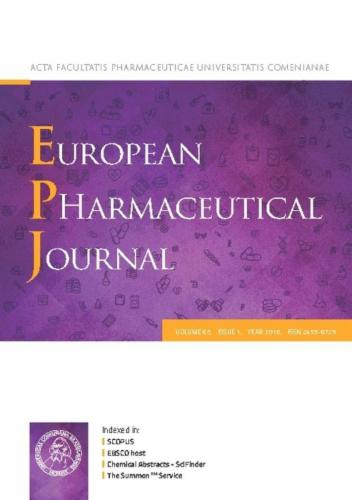Development of a novel physiologically based biopharmaceutics modeling (PBBM) framework using the open systems pharmacology suite, part 1: in vitro modeling of vericiguat
IF 4.7
3区 医学
Q1 PHARMACOLOGY & PHARMACY
引用次数: 0
Abstract
Physiologically Based Biopharmaceutics Modeling (PBBM) links in vitro solubility and dissolution kinetics of oral drugs to Physiologically Based Pharmacokinetic (PBPK) models, enabling the prediction of drug bioavailability. This approach reduces reliance on animal experimentation during drug development. Part 1 of this series introduces a novel, open-source PBBM workflow using the Open Systems Pharmacology (OSP) Software Suite. It combines the newly developed OSP solubility toolbox to estimate drug aqueous solubility and bile salt micelle partitioning from in vitro data, with an updated MoBi® dissolution model that accounts for factors such as hydrodynamic diffusion layer thickness changes and micelle partitioning.
This approach was applied to poorly soluble, highly permeable vericiguat, a first-in-class soluble guanylate cyclase (sGC) stimulator for the treatment of chronic heart failure. The solubility models effectively described the aqueous solubility-pH profile and bile salt partitioning, while the dissolution model captured the in vitro dissolution kinetics of various tablet formulations. Part 2 focuses on integrating developed PBBM sub-models into PBPK models using PK-Sim® to predict vericiguat’s clinical pharmacokinetics after oral administration. This PBBM workflow demonstrates potential for diverse applications, including predictive bioavailability and bioequivalence assessments, in silico formulation optimization, formulation bridging, dose selection, and setting dissolution specifications.

使用开放系统药理学套件开发一种新的基于生理的生物制药建模(PBBM)框架,第1部分:Vericiguat的体外建模。
基于生理的生物药剂学建模(PBBM)将口服药物的体外溶解度和溶出动力学与基于生理的药代动力学(PBPK)模型联系起来,从而能够预测药物的生物利用度。这种方法减少了药物开发过程中对动物实验的依赖。本系列的第1部分介绍了一个使用开放系统药理学(OSP)软件套件的新颖的开源PBBM工作流。它结合了新开发的OSP溶解度工具箱,根据体外数据估计药物的水溶性和胆盐胶束分配,并采用了更新的MoBi®溶解模型,该模型考虑了流体动力学扩散层厚度变化和胶束分配等因素。该方法应用于难溶性,高渗透性的vericiguat,一种用于治疗慢性心力衰竭的一流可溶性鸟苷酸环化酶(sGC)刺激剂。溶解度模型有效地描述了溶解度- ph曲线和胆盐分配,而溶出度模型捕获了各种片剂配方的体外溶出动力学。第2部分侧重于使用PK-Sim®将开发的PBBM子模型整合到PBPK模型中,以预测口服给药后vericiguat的临床药代动力学。该PBBM工作流程展示了多种应用的潜力,包括预测性生物利用度和生物等效性评估,硅片配方优化,配方桥连,剂量选择和设置溶出度规格。
本文章由计算机程序翻译,如有差异,请以英文原文为准。
求助全文
约1分钟内获得全文
求助全文
来源期刊
CiteScore
9.60
自引率
2.20%
发文量
248
审稿时长
50 days
期刊介绍:
The journal publishes research articles, review articles and scientific commentaries on all aspects of the pharmaceutical sciences with emphasis on conceptual novelty and scientific quality. The Editors welcome articles in this multidisciplinary field, with a focus on topics relevant for drug discovery and development.
More specifically, the Journal publishes reports on medicinal chemistry, pharmacology, drug absorption and metabolism, pharmacokinetics and pharmacodynamics, pharmaceutical and biomedical analysis, drug delivery (including gene delivery), drug targeting, pharmaceutical technology, pharmaceutical biotechnology and clinical drug evaluation. The journal will typically not give priority to manuscripts focusing primarily on organic synthesis, natural products, adaptation of analytical approaches, or discussions pertaining to drug policy making.
Scientific commentaries and review articles are generally by invitation only or by consent of the Editors. Proceedings of scientific meetings may be published as special issues or supplements to the Journal.

 求助内容:
求助内容: 应助结果提醒方式:
应助结果提醒方式:


